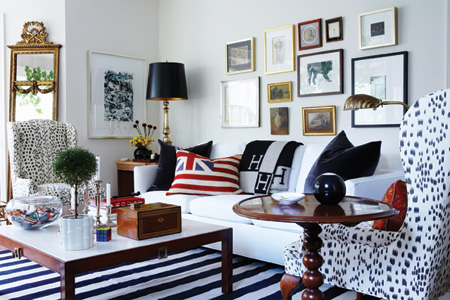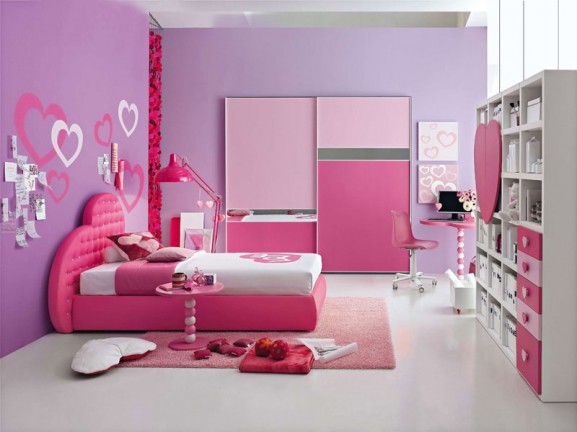Archive for January, 2012

By Relocation.com
When moving to a new house, packing electronics require more attention compared to, say, your furniture. Electronic appliances need careful packing as they are fragile. They are also sensitive to dust, moisture, magnetic fields, pressure and vibrations. Pack them well to ensure you still get to use them (and they remain in tiptop condition) in your new home. Here are some of our tips:
Pack sets together. Some electronic equipment, for example stereo components and movie theater systems, come in sets. Make sure that you pack the sets together. If you accidentally misplace a part, you might be left with a hi-fi system that’s missing one speaker. You should also pack all the corresponding wires and peripherals together with the main system to save yourself the trouble of sorting them out again later.
Use moving boxes for storage. If you haven’t disposed of them yet, use the original moving boxes and paddings, otherwise sturdy corrugated carton boxes bought from the store or provided by the mover will serve the purpose.
Draw a diagram of the wiring. For reference in re-connecting wires and cables between components, draw a diagram of how the wires are hooked up to their corresponding terminals on the device. Note down the color coding scheme or attach matching tags to each wire-terminal pair. Bundle wires and cables securely and label them but do not bind or roll them too tightly to avoid internal damage. Optical fiber cables can easily break.
Secure loose/moving parts with masking tape. If you have a vinyl record player, disconnect the stylus assembly from the tone arm, put it in a small box and tape the box under the tone arm. Fix the turntable to the base with tape to prevent its movement and tape the tone arm to its rest. Lastly close the turntable cover and tape it to the base. Put small hardware items such as screws, nuts and bolts inside a plastic bag and tape the bag to the component where they came from.
Always label “FRAGILE, ELECTRONICS” on the sides and top of each box. When necessary put a “THIS SIDE UP” label on the sides of the box. It goes without saying that cargo items should be tagged with the name and address of the owner.
Before and during the move, keep components away from sources of liquids, wet surfaces, and strong magnetic fields. Provide water-damage protection by placing components inside plastic bags before packing them in boxes.
Pack to protect fragile parts. For components subject to risk of breakage or scratches like TV screens or computer monitors, pack them in such a way as to minimize stress or pressure to the delicate parts. Provide appropriate padding or spacers such as thick cardboard or styrofoam boards or pellets.
Cover speakers. Speaker units also need to be protected from possible dents to the cabinet and the acoustic cones. Cover the front of the cabinet with cardboard and wrap it over and around the edges. For heavy units, it’s a good idea to bind the box with packing tape to prevent bursting and tie it with heavy cord to provide handles for lifting.
Make sure the moving service company drives with care! Check whether the moving company has insurance coverage against loss or damage to cargo.
January 24th, 2012 by
Admin
Categories:
apartments,
condos,
foreclosures,
Home Improvement,
homeowners,
homes for sale,
Moving,
Real Estate,
rentals,
Roommates Comments:
No Comments » 
This guest post was provided by Central Austin homes maven, Allison Allen.
One of the most steps to selling your home is making it attractive to prospective buyers. Showing the house is one thing, but showing it well is a whole different ball game. Even the most seemingly insignificant adjustments can transform your cluttered clamor into the house of people’s dreams. Here are some tips to help you get started.
The first thing to do: remove clutter. Nothing hurts home showings worse than clutter and disorganization and there are plenty of easy ways to de-clutter.
Turn unsightly household objects into home buying appeal. If you have a bunch of old magazines and books lying around, organize them into a bookshelf, or use them to accent other home décor. Old books make great lamp stands when stacked. If you haven’t used the stuff lying around your house in a while, then get rid of it. Whatever attachment you felt towards those things will soon be replaced by a sense of relief for your clutter free household.
Clutter doesn’t just come from knick-knacks and other things lying around, it can also come from having too much furniture packed into your living rooms and bedrooms. Although it my have been a nice set up for you, the potential buyer will be distracted by the lack of space. The less furniture that you have, the bigger the house will look, and that’s a good thing when showing a house. The more space the buyer sees they are getting for their buck, the more willing they will be to meet with asking prices. Before you show your house, take some of your excess furniture and store it away until the move. It will let the house breath and make the space much more accessible to the potential buyer.
Once clutter is removed, and the house is looking nice and open, it is usually a good idea to replace fixtures just to give it that “new house” look. This is one of the easiest and cheapest ways to really give your home a visual kick
Just as important as the inside of the house, the outside must also make a great impression on the potential buyer. Basic steps are to landscape and touch up any blemishes on the exterior of the property. Mulch that flower bed and plant something! Got dirty gutters, clean them! Nothing will hurt a house showing more than a beautiful interior and the second they step into the backyard, there’s potholes, patchy grass, and dirty windows—another inexpensive, sure-fire way to help your For Sale by Owner experience.
But perhaps most importantly in the staging process is the first impression, or as we say in the real estate business, “curb appeal”. The entrance to your home will set the tone for the rest of the house. So, tidy up that entryway. Maybe even give that front door a nice bold coat of paint on it so that the entrance will be fresh and inviting.
When selling your home, the most important element of the selling process is how the home shows. No matter your price, an ugly, uninviting, cluttered home won’t sell and it won’t look good on the part of the seller. So remove that clutter, dust of that lampshade, polish that doorknob and present a respectable and asking-price-worthy home to the buyer. Hey, you never know–after you’re done staging, your home might look so good you’ll want to stay.

By Relocation.com
Now that we are a few months into 2012 we have been thinking about our resolutions – both for moving and our home. We all promise to get in shape, quit smoking, spend more time with the family etc., but perhaps we should also make some home decorating resolutions for the coming year. These are some of the promises we should keep in 2012 when it comes to our homes.
Resolution #1: Reduce Clutter:
Clutter makes your home look messy and crowded. There’s nothing like keys, receipts, unopened mail, and other various knickknacks to make a beautifully decorated home look untidy an unkempt. The problem with clutter is that it stems from our habits, our attitudes of “I’ll clean that up later” and before we know it, there’s a big pile of stuff in every corner of our room. We have to train ourselves not to do this, or at least make it easy for us. Hang a key caddy near the door or the garage so you immediately put your keys there when you go home instead of tossing them on the counter. Give yourself no more than 48 hours to sort out mail. These things will make a difference when it comes to your home.
Resolution #2: Break out of your comfort zone:
Symmetry can create an orderly look, but it can be too boring. The same goes for neutral palettes and even patterns. This year, do something daring, even if it’s just in your living room or bedroom. Why not rearrange the furniture to break up the monotony of your room? Or have a bright-colored bed spread to contrast to your neutral colored walls. If you’re feeling daring, add color to a room by painting it with a color you’d never think of. This is the new year, so it’s time to shake things up.
Resolution #3: Adjust your lighting:
Lighting can really can the mood of the room. Perhaps all you think of light are the bright lights overhead that you switch on and off. You can change the look and feel of the room by adding some low lamps with soft lighting. Also, think of the environment and change your old high-wattage lamp into energy-saving bulb (you’ll save a bundle too!)
Resolution #4: Reduce your stuff:
Is your garage so filled with things that you can’t even fit a car in there? If you have a lot of things lying around that you don’t need and always tell yourself you’ll get around to cleaning it out eventually, stop everything you’re doing and get to it NOW! This is the best time to get rid of all the stuff you have, like the pair of skis you bought but never used, or the old lawnmower that you’ve replaced. Start by removing everything you have in your garage or storage area and divide it into things you want to keep, throw or you can give away. Be ruthless – if you haven’t used or seen it in a year, then you don’t need it. Throw out old trash and have a pile that you can give to Goodwill or sell at garage sale or eBay.
The secret to keeping New Year’s Resolutions are to make it easy for yourself and have concrete goals. With these decorating resolutions, you can keep your home clean, tidy and beautiful throughout the year.

By Relocation.com
After you settled in from your moving experience, it’s time to think about the look of your home. If your current home décor looks old, tired and outdated, then now is the time to bring in a fresher look. There are lots of upcoming trends in 2012 you should check out, to help you find ideas for your next home improvement decorating projects.
Green is Always In:
These days, everyone is getting on the environmental bandwagon, so don’t get left behind! Going green not only helps the environment, but in many cases helps your wallet too, such as switching to eco-friendly light bulbs. You can redecorate your home to reflect an environmentally-conscious personality by using materials that are eco-friendly. For flooring, for example, you can use cork, instead of pricey hardwoods. If you want the look of marble, but don’t want the expense of the larger carbon footprint associated with having it shipped from abroad, a material called paperstone is perfect for countertops. It is durable and made from 100% post-consumer recycled paper. Using unbleached linens can lessen your impact on the environments, and even the simplest linen can make any room look good.
Good as Gold:
Long thought to be gaudy and a feature only used by “nouveaux riche,” gold is making a big splash in 2012. While silver metals have always been associated with class, a few touches of gold can make any room look elegant (just don’t overdo it.) Use it sparingly and only for accents, like gold throw pillow, gold tassels on your curtains or gold picture frames. Mix it up with some rich colors like purple to make it really pop. Brushed brass is also a good alternative, if you don’t like the too-polished look of gold.
Neon is Back:
Neon shades are making a big comeback, and it’s not just in fashion! Neon colors can really brighten up the room, the key is to not overdo it and stick to one color. These bright shades look best against neutral tones like gray or white, but try mixing it with softer shades. You might be surprised how neon green works with soft shades of blue.
Mix-and-Match:
Decorating has its rules, and many designers want to make sure that they keep pieces together according to style. However, this is the year to break the rules, and you’ll find styles and centuries mixing together. For example, an elegant art nouveau chair can look good in a minimalist apartment, provided it be the focal point. Don’t go crazy by mixing too many styles, and make sure the room still looks beautiful.
Men’s Motifs:
It seemed for a long time that decorating was purely a woman’s job and so many designs and prints are geared towards the ladies – just check any sample book or decorating magazine and you’ll see the prevalence of florals and paisleys, silks and satins. However, prints that have been traditionally “male” like pin stripes and houndstooth, as well as fabrics like wool and tweed are moving from the boardroom to the bedroom.
So, now that you know what to look forward to in 2012, start planning your next project today!

By Relocation.com
After all of the tasks related to moving are completed there is the question of decorating that you will have to deal with. Decorating a bedroom can be a fun bonding activity between you and your teenager. For a teen, their bedroom can be their sanctuary, and so you want to make sure it is a place where they feel comfortable in. You can be involved with making the decisions, but you should also consider what your teenager likes (if you don’t know – ask!) So, here are some quick tips to help you and your teen with this decorating task.
Budget.
Setting a budget is important, so you don’t go overboard and your teen will have a realistic expectation what he or she can do with their room. If you’re doing major renovations, then you’ll probably have to set a bigger budget than if you’re just going to paint or wallpaper the room.
Design and Color.
What type of teen do you have? Is she a girly girl or a punk rocker? Does he love sports or playing video games? Let your child choose what theme and design his or her room will be. Don’t let them decide everything; after all, it’s your home. For example, painting the room black may not be a good option if you plan to sell the house in a few years. Getting hot pink carpet may be your teen’s idea of a fun time, but think about how it will affect the value of your home. Have them come to you with different ideas and then you can choose together. The idea here is to compromise.
Space.
Aside from what color walls or accents you’ll have, you’ll also have to consider the space. Your teen will want a bed and a place to study. If you’re buying furniture, you have to make sure that they’ll have a place in the room. Storage options are also important. If the room doesn’t have a built-in closet, they’ll need a clothes closet. You’ll also need shelves for books and other things they want to display, and perhaps some out of the way storage for things they don’t use often or for seasonal clothes. Under the bed storage can help you save space in this case. If the room is large, maybe you can add an exercise or lounging area as well.
Accessories.
Much like in fashion, accessories can make or break a room. If you’re just doing minor decorating, things like curtains and sheets can really change a room. Get sheets, pillowcases, curtains, towels, even shower curtains that match your theme and design. Or you can add a touch of color with small things, like lampshades and carpets to make a big difference.